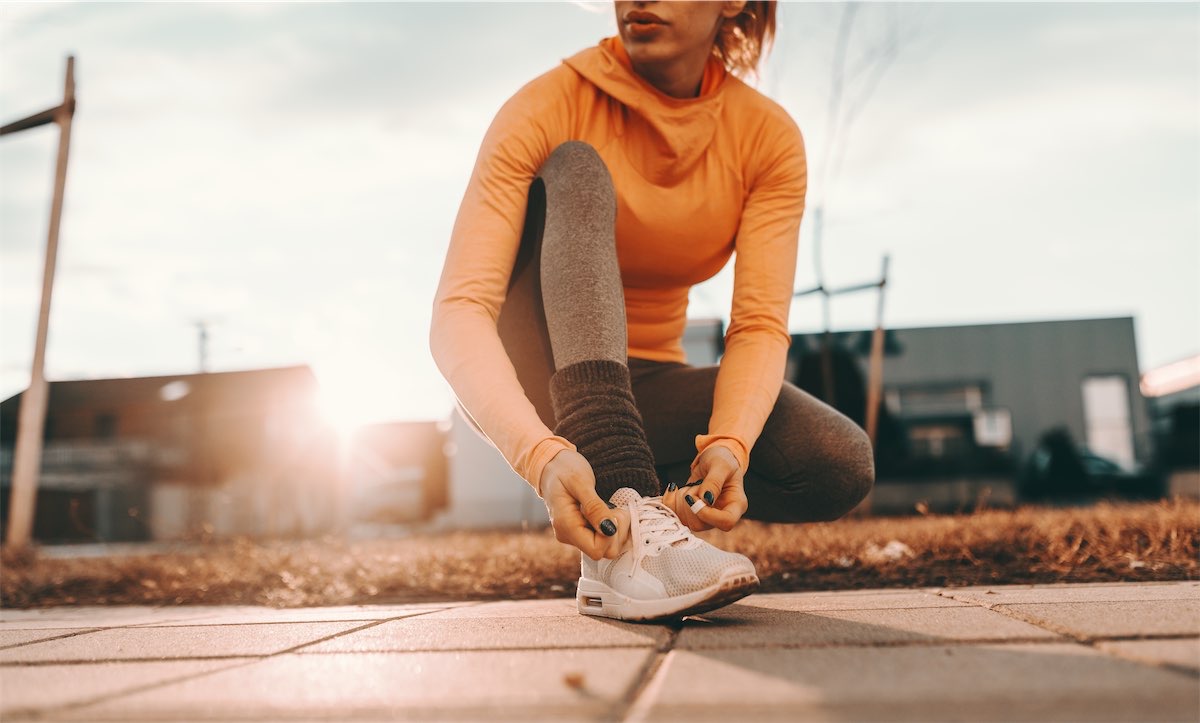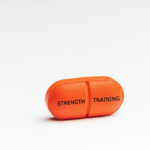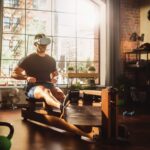Around here at MOSSA I have been nicknamed “Muma Browning.” It is usually in reference to when I am giving a bit of a pep-talk or, as my daughters would say, giving a bit of a lesson. So, I am going to put on my Muma Browning hat and talk to you about how important it is to get down with getting up.
The ability to get down to the ground confidently and competently and then stand up again is one of the most essential human movement skills we can maintain (or reclaim). In fact, our friends at the Institute of Motion (IoM) suggest that it is one of life’s Six Fundamental Movement Patterns, along with walking, bending, rotating, squatting, and lunging.
In our real lives, we do quite a lot on the ground (tie shoes, play with kids, garden, look under the bed, sit on the grass, pick up something from the floor, get a golf ball out of a hole…) and the movement up and down requires a lot: mobility in our joints (knees, hips, and ankles), balance, relative strength (the ability to move your own bodyweight around in space), and coordination.
In fact, “Ground to Standing,” as it’s commonly known, can be considered a type of measuring stick for all the things I just mentioned. Your ability to go to the ground and up means you have the “ability”; not being able to go to the ground and up means you have a “disability.”
What’s more, studies show that a person’s ability to get down to and up from the ground with ease directly correlates with their remaining life expectancy. Brazilian physician Claudio Gil Araujo measured how easily (or challenged) his patients could move into a seated position on the ground and then return to a standing position (details below). This study’s data showed that the simple act of being able to get up off the ground with ease was associated with reduced mortality rates (lower risk of death). Simply put, not only is the ability to get up from the floor a deceptively simple measure of flexibility, strength, and balance, but it heavily factors into who will live longer and whose lives will be cut short.
Dr. Araujo followed over 2,000 adults ages 51 to 80 for an average of 6+ years. Each volunteer was asked to sit down on the floor and then get up, using the least amount of support possible from hands, knees, and other body parts. Researchers used a point system where 10 was a perfect score. One point was deducted each time the person used a hand, knee, or other body part to get up or down. Half a point was deducted for “wobbly” movements. If the person could not get up and down, they received a score of zero.
Dr. Araujo determined that people who scored fewer than eight points on the test were twice as likely to die within the next six years compared with those who scored higher. Those who scored three or fewer points were more than five times as likely to die within the same period compared with those who scored more than eight points. In the end, each positive point value meant a 21% decrease in mortality.
Do you know how you’d score? Aren’t you curious? Well go ahead, measure. And don’t stop there; measure your parents, your kids, your aunts, uncles, and friends.
Here is what I know to be true and excuse me while I get all Muma Browning again. Besides those who have a genuine issue that prevents this movement, many simply engineer Ground to Standing out of their life…they just WON’T DO IT. And before long the I WON’T turns into I CAN’T. It’s that simple. By choosing to not do it, our body slowly loses the ability. And sorry for the cliché, but we all know: if we don’t use it, we lose it. But here is the exciting caveat. Our body is so responsive, that we can retain or reclaim our ability to do this movement at just about any age. How? Well, just do it! (See what I did there!)
And if you have trouble motivating yourself to do it alone, then don’t worry. The Ground to Standing movement category is so important that we have baked it into almost all MOSSA programs. For example, Ground to Standing patterns are used in the Core tracks in both Group Active and Group Power, as well as throughout the Group Core workout. Really, Ground to Standing patterns have been part of MOSSA programming for many years, like anytime we have done a burpee in Group Blast, a sprawl in Group Fight, or anytime we move from Down Dog to Mountain Pose in Group Centergy. Based on all available evidence, we now look at Ground to Standing patterns as an indispensable part of a balanced training protocol.
One of the things I have always taught my daughters is that you “do what you have to do so that you can do what you want to do.” This was mostly related to doing their chores so that they could go and play with friends, and nowadays it might be doing their homework so they can borrow the car; but I believe it applies to a lot of things. Maybe practicing Ground to Standing is the “have to do” so that you can enjoy all the things you “want to do.” It is about enjoying a physically robust and active life – no matter our age!



 More than Muscles: Benefits of Strength Training
More than Muscles: Benefits of Strength Training New Member Onboarding: Over-Welcoming or Overwhelming?
New Member Onboarding: Over-Welcoming or Overwhelming? Team vs. Technology and the Future of Fitness
Team vs. Technology and the Future of Fitness Setting Goals for Group Fitness
Setting Goals for Group Fitness Does Exercise Have to be Boring and Bitter?
Does Exercise Have to be Boring and Bitter?